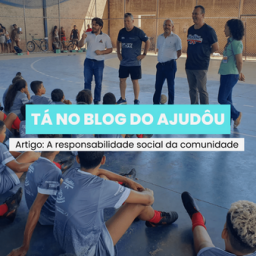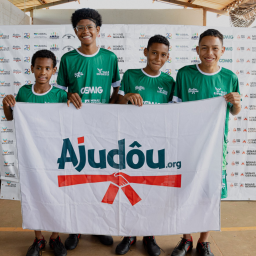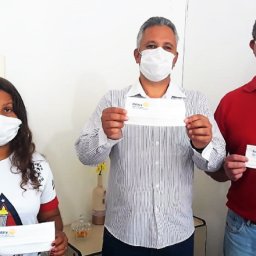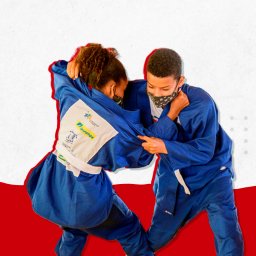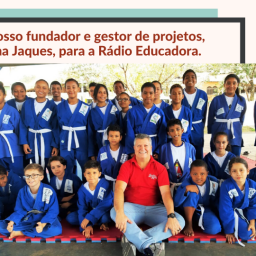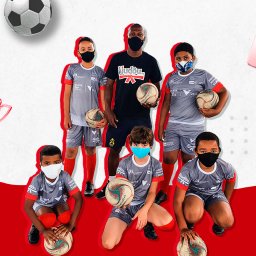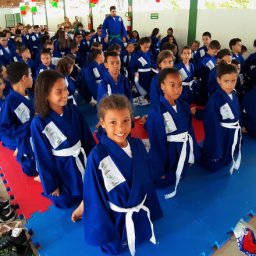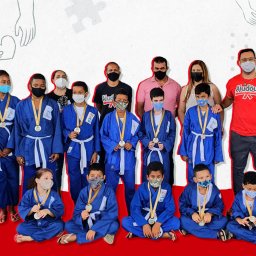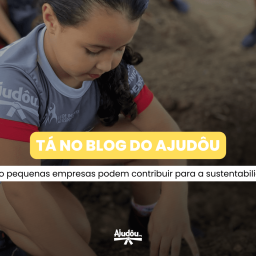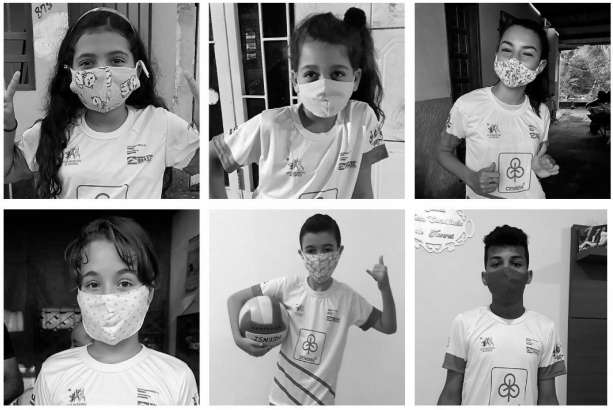
| As informações deste manual foram retirados quase que na íntegra de órgãos competentes no combate a Covid-19. Manual sobre Biossegurança para Reabertura de Escolas no Contexto da Covid-19Disponível em: https://portal.fiocruz.br/sites/portal.fiocruz.br/files/documentos/manual_reabertura.pdfProtocolo para Retomada das Atividades Esportivas no Estado de São Paulo, considerando o Impacto do Covid-19 no Esporte, Atividades Físicas e Bem-estar Disponível em: https://www.cob.org.br/pt/documentos/download/8412b13a39025 |
Apresentação
As escolas públicas estão presentes em diversos territórios, sendo, frequentemente, a única referência de política pública para algumas comunidades. Suas funções expressam compromissos com a formação humana, a ciência e a defesa da vida. Uma das primeiras medidas para reduzir o contágio da Covid-19 foi a suspensão das atividades escolares. Na maior parte dos estados e municípios brasileiros, a suspensão ocorreu a partir do dia 16 de março de 2020, cinco dias depois do anúncio da Organização Mundial de Saúde (OMS) de que a Covid-19 se tratava de uma pandemia, com expressiva mortalidade em vários países.
O fechamento de escolas é uma das expressões mais evidentes dos efeitos sociais da Covid-19. Dados da Organização das Nações Unidas para a Educação, a Ciência e a Cultura (Unesco) indicam que tal medida atingiu mais de 190 países, o que afetou 1,57 bilhão de crianças e jovens – 90% da população estudantil de todo o mundo.
A retomada das atividades escolares de forma presencial tem sido uma das discussões mais centrais da agenda pública durante a pandemia, como elas estão diretamente ligadas as atividades do Ajudôu, iremos nos amparar neste documento produzido pela Fiocruz sobre práticas de biossegurança e contingência para o retorno dos alunos às escolas.
Este manual tem como proposta apresentar como o Ajudôu irá proteger seus alunos durante aulas esportivas com novas metodologias de exercícios, protocolos de higienização e medidas restritivas para não haver contaminação dos atletas e colaboradores da ONG.
1.1 O que precisamos saber sobre a Covid-19?
No dia 11 de março de 2020, a Organização Mundial da Saúde (OMS) declarou estado de pandemia para a Covid-192, ou seja, ela alcançou disseminação mundial, espalhando-se pelos diferentes continentes do planeta com transmissão de pessoa para pessoa.
A Covid-19 é uma doença causada por infecção pelo novo coronavírus (Sars-CoV-2), apresentando um quadro clínico que varia de infecções assintomáticas a quadros respiratórios graves. Suas variáveis biológicas são, portanto, amplas e pouco conhecidas, o que dificulta a realização de ações e tomadas de decisão com muita antecedência. Como o vírus é similar ao que causou a epidemia da Sars (síndrome respiratória aguda grave) em 2002, sua denominação contou com a inserção do número 2.
Esse novo vírus, da família do coronavírus, é conhecido por causar infecções respiratórias e ter, ao microscópio, uma aparência de coroa. É recoberto por um envelope que apresenta uma estrutura lipídica (gordura) e proteínas do vírus. Assim, podem perder facilmente sua ação infectiva com detergentes, desinfetantes e solventes lipídicos, apresentando ainda sensibilidade ao calor (Flores, 2007).
Do ponto de vista de sua origem, pesquisadores chineses suspeitam que o novo vírus seja originário de morcegos, assim como a maioria dos outros coronavírus. Sabe-se que houve o fenômeno de ‘transbordamento zoonótico’, comum à maioria dos vírus, que fez com que um coronavírus que acomete morcegos sofresse mutação e passasse a infectar humanos. As pesquisas indicam, no entanto, que essa mutação foi um processo natural e não induzido pelo homem (Fundação Oswaldo Cruz, 2020a).
1.2 Quais as formas de transmissão do vírus?
Como o novo coronavírus ou Sars-Cov-2 foi descoberto há pouco tempo, ainda é necessário o desenvolvimento de pesquisas científi cas para conhecer, em profundidade, todas as características do comportamento do vírus e suas manifestações nas populações. Entretanto, até o momento, sabemos que, como o vírus se localiza no trato respiratório da pessoa infectada, sua transmissão pode ocorrer pelo ar ou de pessoa para pessoa por meio de:
• Gotículas produzidas por indivíduos infectados e que podem ser transmitidas por meio de tosse, espirro, catarro ou pela própria fala. Essas gotículas podem atingir a boca, olhos ou nariz de pessoas próximas ou podem ser inaladas até os pulmões. Elas podem atingir a distância de até 2 metros nessas situações.
• Contato com objetos ou superfícies contaminadas e posterior contato com a boca, nariz ou olhos.
• Contato físico com pessoa contaminada, como, por exemplo, ao apertar a mão de uma pessoa contaminada e em seguida levar essa mão à boca, ao nariz ou aos olhos.
O vírus pode ser transmitido não somente por pessoas que tenham sinais e sintomas da doença, mas também por todas aquelas que possuam o vírus em seu corpo e que não tenham desenvolvido nenhum sinal ou sintoma da doença, o que denominamos de casos assintomáticos. Ainda não existem estudos científicos que possam afirmar com segurança qual seria o percentual de assintomáticos entre o total de pessoas infectadas.
Tendo conhecimento das formas de transmissão do vírus, sabemos que medidas de proteção isoladas não terão efeitos consistentes, mas, se adotadas em conjunto, poderão reduzir a sua transmissibilidade. Por fim, ainda não se tem conhecimento sobre a durabilidade da imunidade conferida às pessoas que já tiveram a Covid-19, ainda mais com as novas cepas. Desse modo, os procedimentos aqui descritos devem ser seguidos por todas as pessoas que frequentam o estabelecimento escolar, inclusive aquelas que já tiveram a doença.
1.3 Quais os sinais e sintomas da Covid-19?
A Covid-19 pode apresentar sinais clínicos e sintomas que podem variar entre leves e graves. Muitos destes sinais e sintomas apresentam características inespecíficas, pois também se evidenciam em outras doenças. Outros, no entanto, parecem ser mais específicos à Covid-19, como a perda de olfato e paladar (1/3 dos infectados apresentam). Cabe ressaltar que eles podem aparecer de forma isolada ou em conjunto, não sendo incomum a manifestação de apenas alguns deles. Os sintomas podem aparecer de 2 a14 dias após a exposição ao vírus.
| Segundo o Centers for Disease Control and Prevention (2020b), os sintomas mais observados são: • febre (temperatura > 37,8º) ou calafrios;• dor de garganta; • dor de cabeça; • tosse; • fadiga; • perda de paladar ou de olfato; • dor muscular; • náusea ou vômito; • falta de ar ou dificuldade de respirar; • congestão nasal ou coriza; • diarreia. |
1.4 Procedimentos diante de um caso suspeito de Covid-19 em algum aluno do Ajudôu;
• Todos os trabalhadores e os estudantes devem estar informados sobre os procedimentos perante a identificação de um caso suspeito de Covid-19.
• Caso qualquer trabalhador ou estudante apresente sinais ou sintomas da Covid-19, a orientação é de que permaneça em casa e entre em contato com a escola para informar a situação.
• Diante da identificação de um caso suspeito na escola, autorreferido ou com base na constatação de sinais e sintomas no momento da entrada, este deve ser encaminhado para a área de isolamento previamente definida e, de acordo com as indicações dos protocolos dos serviços de saúde locais, encaminhado para serviço de saúde. O procedimento ideal é de que seja realizado um teste do tipo RT-PCR no serviço de saúde para a confirmação do caso. A coleta do material deverá ser realizada até o oitavo dia após o início dos sinais e sintomas.
• Devem ser acionados os contatos de emergência do estudante para informe e orientações sobre a necessidade de observação e de isolamento domiciliar, evitando contato também com os outros moradores da casa, especialmente se forem pessoas com maior risco de desenvolver quadros graves da Covid-19. Também deve ser aconselhado a procurar uma unidade de saúde.
• Reforçar a limpeza e desinfeção das superfícies mais utilizadas pelo caso suspeito, incluindo as da área de isolamento.
• Orientações para a coleta dos resíduos produzidos pelo caso suspeito estão contempladas no item 2.12.
1.5 Procedimentos diante de um caso confirmado de Covid-19 no projeto realizado pelo Ajudôu.
Entrar em contato com a direção da escola para definição dos métodos de rastreamento de contatos do caso e definição dos parâmetros para adoção de medidas de proteção como, por exemplo, a suspensão de aulas em casos de excessiva transmissibilidade no ambiente escolar ou no território.
2. Procedimentos diretamente ligados as atividades do Ajudôu no território escolar
2.1 COMUNICAÇÃO E INFORMAÇÃO
• Exibir em local visível na entrada de locais de treinamento as informações acerca da Covid 19 e das medidas de prevenção;
• Realizar na aula de abertura para os alunos uma palestra sobre os cuidados com a Covid 19 e apresentar o protocolo para realização dos treinamentos;
• Durante as aulas os professores sempre irão reforçar a medidas de profilaxia da Covid 19
2.2 . HIGIENIZAÇÃO E DESCONTAMINAÇÃO
• Disponibilizar álcool gel aos praticantes e demais presentes aos locais de treinamento;
• Disponibilizar sabonetes líquidos e locais com água corrente para assepsia das mãos;
2.3.MEDIDAS DE PROTEÇÃO INDIVIDUAL
• Todos os atletas, praticantes e demais presentes aos locais de treinamento e devem USAR MÁSCARA, Se possível, troque a máscara toda vez que estiver úmida;
• Trazer de casa sua hidratação, e não socializar, nem utilizar recipientes de outras pessoas (squeezes, toalhas, etc); Se tiver que usar os bebedouros, evite tomar diretamente. Primeiro higienize e depois utilize seu copo ou garrafa para encher d´água;
• Lavar com frequência as mãos até os punhos, com água e sabão, ou higienizá-las com álcool em gel 70%;
• Praticar etiqueta para tosse (manter distância de pelo menos 2 metros, cubra a tosse e espirro de preferência com o cotovelo;
• Evite apertar as mãos ou abraçar e tocar a própria boca, nariz ou olho;
• Utilize seus próprios equipamentos. Na impossibilidade de fazê-lo, é necessária a desinfecção do equipamento antes de utilizá-lo;
• Mantenha distância de ao menos 2 metros de outras pessoas, para qualquer situação de treinamento;
2.4 MEDIDAS DE PROTEÇÃO COLETIVA
• Adequação da quantidade de alunos por turma de acordo com o tamanho do espaço.
• Distanciamento mínimo exigido durante as aulas (1 aluno a cada 2m quadrados).
• Todos os alunos devem começar e terminar as atividades no mesmo espaço de tempo e saírem de forma ordenada, sem contato e aglomeração.
• Término das aulas 10 minutos antes para ter contato com a turma da próxima aula.
• Recomenda-se ao praticante não levar mochilas e/ou acessórios que demandem cuidados, com exceção de garrafas de água ou squeezes. Em modalidades que é necessário a utilização de acessórios, estes devem ficar em locais de acesso sem aglomeração;
• Deve-se evitar a utilização e o manuseio de celulares durante a prática de atividade física;
• Checar a temperatura dos frequentadores antes de adentrar espaço de treinamento, não autorizando a entrada de pessoas, tanto atletas quanto colaboradores, com temperatura de 37,8º ou mais nos locais de treino;
• Evitar aglomerações nos momentos antes e pós-treinos;
• Reforço na limpeza dos equipamentos e locais de treinamento e circulação de pessoas, principalmente os de uso comum, como colchonetes, barras, colchões, tatames e outros. A cada sessão de treinamento ou competição deve ser realizada desinfecção do local com produtos apropriados;
• Recomendar aos grupos de risco (maiores de 60 anos, cardiopatas, doentes pulmonares crônicos etc.) que não participem das primeiras semanas de treinamento e competições;
• Não utilizar guarda volumes nem outros locais onde pode ocorrer estímulo à aglomeração de pessoas;
• Organizar os treinamentos com horário marcado e recomendar aos praticantes que cheguem aos horários estipulados, e ao término do treinamento, não façam reuniões, retornando imediatamente às residências;
• O contato físico não é permitido em esportes de contato como lutas;


